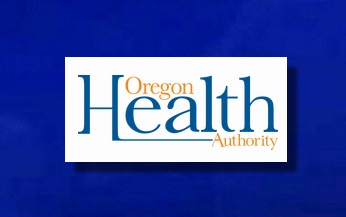New Oregon survey data shows record-high health insurance coverage

PORTLAND, Ore. (KTVZ) -- The Oregon Health Authority announced Tuesday that its biannual Oregon Health Insurance Survey data showed a record-high 95.4% of people in Oregon had health coverage in 2021, up from 94% in 2019.
This was the first year since the ACA expansion that insurance coverage increased significantly. The gains were driven largely by federal pandemic rule changes for Medicaid[1], which ensured that people enrolled in Medicaid coverage stayed covered. The largest coverage gains were among low-income adults as far fewer people reported being uninsured due to loss of Medicaid coverage. In fact, people reporting Medicaid coverage jumped to 29% in 2021 from 25% in 2019. At the same time, employer-based insurance coverage continued its slow multi-year decline while Medicare and Individual remained steady.
One of the key factors in the improved coverage rate was the near elimination of Medicaid population “churn” – people returning to Medicaid coverage after less than a year. In September 2019, the “high churn” population made up 34% of new enrollees that month. With continuous enrollment policies during the Public Health Emergency (PHE), only 8% of new enrollees were returning after less than a year. The number of people entering Medicaid per month who have never been on Medicaid before has stayed stable before and during the pandemic at about 9,000 people per month.
“We know that keeping people enrolled in health insurance – whether it is a public program or their job-based coverage – is key to lowering our rate of uninsurance so people can access critical health care services,” said Jeremy Vandehey, Director of Health Policy and Analytics at OHA. “Specifically, this two-year period shows that people cycling on-and-off insurance means they eventually lose coverage. Therefore, its deeply important to break those cycles and keep people continuously enrolled. For low income families, we know that incomes fluctuate, but access to the health care should not.””
Oregon made progress in reducing disparities in health coverage caused by health inequities and structural racism during this period. Notably, the uninsured rate for Black/African American individuals dropped from 8.2% to 5% between 2019 and 2021. In other communities the improvement was less pronounced: Uninsured rates among Hispanic/Latinx communities dropped slightly, as it did among American Indian/Alaska Native communities. Native Hawaiian or Pacific Islander communities showed an increase in uninsurance, which OHA will seek to understand and to address.
“With our goal of ending health inequities by 2030, OHA is committed to enacting policies that continue our progress,” added Vandehey. “One key area we look to sustain this improvement is through our upcoming Medicaid waiver, where we are asking the federal government’s permission to implement policies like continuous Medicaid enrollment for children until their sixth birthday, and two-year continuous enrollment for people age 6 and up. We now have proof that such policies will make a significant difference for Oregon families – particularly those harmed by historic and contemporary racism.”
Meanwhile, OHP coverage also increased in rural and frontier regions of the state. Although insurance coverage lags from the statewide average, coverage did increase to 92.3% from 91.0% in frontier and to 94.6% from 93.8% in rural parts of the state. In some rural and frontier counties, such as Jefferson, Josephine, Malheur, and Klamath, 2 in 5 residents receive health coverage through OHP, far higher than the state average. And in frontier regions of the state overall, about 2 in 5 people who remain uninsured are eligible for Medicaid.
“OHA’s goal is to ensure that at the end of the Public Health Emergency, we work systematically to keep people covered,” said Vandehey. “For those who are no longer eligible for OHP, we will be working to make sure they access a Marketplace plan or connect to other programs. This handoff is critical, as the data show, because we cannot lose people as they exit Medicaid. If we do, much of this hard-won coverage gain will be lost.”
OHA’s current plan for transition includes:
- Implementing a robust outreach and communication plan to let Medicaid members know what to expect and encourage them to update their contact information so that their coverage can be renewed.
- Creating ongoing coordination between Medicaid and the Marketplace to ensure that members who lose Medicaid coverage are supported in their transition to a private plan.
- Maximizing the existing automated renewal process to reduce the burden on members. If coverage cannot be automatically renewed, members receive a pre-populated renewal notice that they must sign and return.
- Engaging community partners to help connect people leaving OHP to other sources of health coverage, such as through a job.
###
[1] In March of 2020, Congress passed the Family First Coronavirus Recovery Act which:
1) Provided 6.2% enhanced federal Medicaid funding for states to maintain continuous Medicaid coverage and not disenroll Medicaid enrollees for the duration of the federal public health emergency (PHE).
2) Removed administrative barriers to enrollment, such as
- Allowing applicants to attest to most eligibility criteria
- Expanding presumptive eligibility and options for remote assistance
Not terminating coverage for people who are found ineligible during annual renewals.



